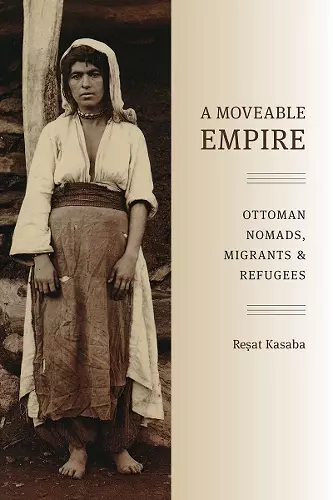A Moveable Empire
Ottoman Nomads, Migrants, and Refugees
Format:Paperback
Publisher:University of Washington Press
Published:2nd Dec '09
Currently unavailable, and unfortunately no date known when it will be back

Just as impressive as the chronological breadth and scholarly depth of his research is Kasaba's adroitness in connecting the dots with the eye of a historically informed social scientist. -- Hasan Kayali, University of California, San Diego This case study is a measured challenge to epistemological stereotypes about the Middle East and an accessible explanation for the longevity of the Ottomans. There is nothing to compete with it. -- Virginia H. Aksan, McMaster University
Examines the history of the Ottoman Empire by focusing on the migrant groups that lived within its bounds and their changing relationship to the state's central authorities.
A Moveable Empire examines the history of the Ottoman Empire through a new lens, focusing on the migrant groups that lived within its bounds and their changing relationship to the state's central authorities. Unlike earlier studies that take an evolutionary view of tribe-state relations -- casting the development of a state as a story in which nomadic tribes give way to settled populations -- this book argues that mobile groups played an important role in shaping Ottoman institutions and, ultimately, the early republican structures of modern Turkey.
Over much of the empire's long history, local interests influenced the development of the Ottoman state as authorities sought to enlist and accommodate the various nomadic groups in the region. In the early years of the empire, maintaining a nomadic presence, especially in frontier regions, was an important source of strength. Cooperation between the imperial center and tribal leaders provided the center with an effective way of reaching distant parts of the empire, while allowing tribal leaders to perpetuate their own authority and guarantee the tribes' survival as bearers of distinct cultures and identities. This relationship changed in the eighteenth and nineteenth centuries, as indigenous communities discovered new possibilities for expanding their own economic and political power by pursuing local, regional, and even global opportunities, independent of the Ottoman center.
The loose, flexible relationship between the Ottoman center and migrant communities became a liability under these changing conditions, and the Ottoman state took its first steps toward settling tribes and controlling migrations. Finally, in the early twentieth century, mobility took another form entirely as ethnicity-based notions of nationality led to forced migrations.
". . . a vital, easily accessible, teaching supplement to stress larger points we all try to make about the diversity of peoples that the Ottoman experience encompassed."
-- Isa Blumi * Insight Turkey *"His take on 600 years of Ottoman dynamism challenges specialists to re-think epistemological paradigms, illustrates to the general scholar the necessity for new methodological tools, and remains accessible to the student interested in comparative Eurasian history."
* The Journal of Interdisciplinary History *"International studies professor Kasaba offers an engaging history of nomads, tribes, and migrant groups that lived within the borders of the Ottoman Empire. He enthusiastically explores the relations of these various groups within the central state, positing that cooperation between these groups and the Ottoman state strengthened the empire even while allowing local leaders to hold autonomous authority."
* Choice *"In this remarkable work of synthesis, Kasaba provides critical new insights into the relevance of the Ottoman past to the modern Middle East and makes a major contribution to the study of tribe and state relations across eight centuries."
* American Historical ReviISBN: 9780295989488
Dimensions: unknown
Weight: 295g
216 pages